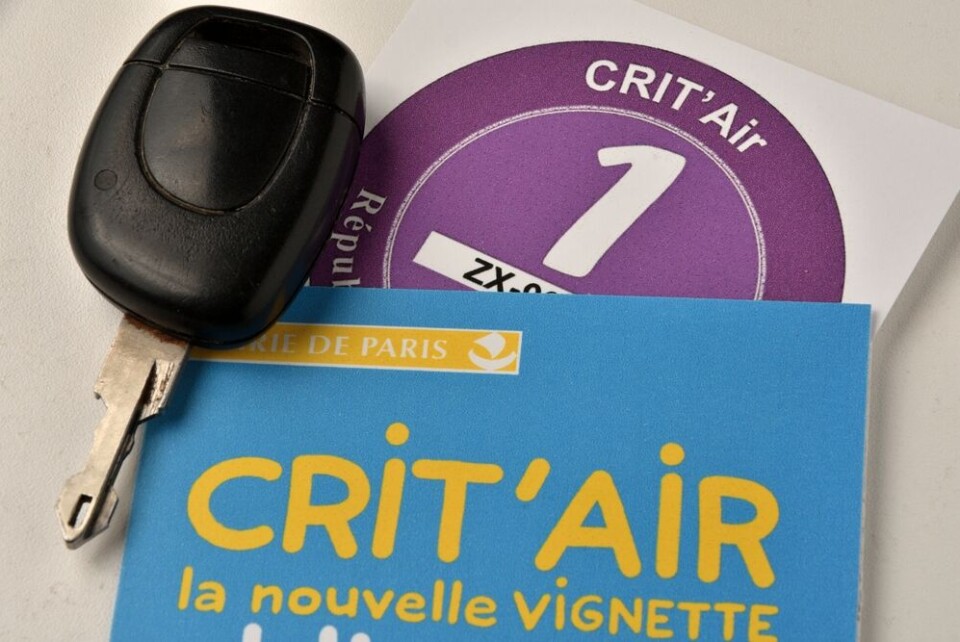-
Britons are the largest foreign community of second-home owners in Nouvelle Aquitaine
See which other departments in the region are popular with British nationals
-
Travellers risk extra costs under new Eurotunnel ticket rule
Some fare options are less flexible and less forgiving of lateness
-
May will be difficult month for train travel in France, warns minister
Two major train unions are threatening to strike and are ‘not willing to negotiate’, he says
Where in France must drivers now show a car pollution-level sticker?
Several cities have updated their rules on the zones while others have pushed back scheduled changes

Several French cities have changed the rules over which vehicles can drive in or through them as tighter restrictions on zones à faibles émissions (low-emission zones, or ZFEs) came into place on January 1, 2024.
The cities of Lyon, Grenoble, and Strasbourg have introduced further restrictions with Crit’Air 4 level vehicles now banned in most cases.
Toulouse and Paris, which were both originally set to ban Crit’Air 3 level vehicles within city limits on January 1, 2024, have delayed implementing these changes.
Twelve cities currently have full ZFE zones in place.
No further cities or towns have yet introduced ZFE rules despite all areas with a population of 150,000 or more being due to do so by January 2025 - although this now seems increasingly unlikely as many local authorities oppose the move.
What are ZFE zones?
As a reminder, all vehicles entering a ZFE must have a Crit’Air number sticker on their windscreen.
This includes motorbikes, vans, and all foreign-plated vehicles, even if only partially passing through one of the zones.
Cars that do not have a Crit’Air sticker caught driving in a zone where they are required can face a fine. This is set by the local authorities and changes between each ZFE, and is levied for each infraction.
Read more: A guide to Crit’Air stickers in France
Clermont-Ferrand in Auvergne-Rhône-Alpes was the last city to introduce a zone in July 2023, although for the first six months no fines, and only warnings and information about the new zone, were handed out.
You can see a map of the zones below:
In theory, 43 areas will have a ZFE in place by this time next year if the government’s timetable is followed.
What new changes are there?
The changes in Lyon, Grenoble, and Strasbourg all relate to vehicles classed as a Crit’Air 4 – these are diesel cars first registered between 2001 and 2005, and two-wheeled vehicles between 2000 and 2004.
You can use the official Crit’Air website to find out the level for your own vehicle (and also purchase a Crit’Air sticker).
Below, we cover the specific rules for each city.
Lyon: All vehicles of a Crit’Air level of 4 are now banned from driving in areas where a ZFE is in place, with Crit’Air level 5 cars already being banned in 2023.
You can look on the prefecture’s website to find the exact limit of this zone
Grenoble: Vehicles of a Crit’Air level 4 are banned from driving in ZFE zones between 07:00 and 19:00, on Monday to Friday.
However, exemptions will exist for people driving to access health services, vehicles of workers driving through the zone to reach a destination without good access to public transport, or for companies struggling to maintain profitability.
Workers with difficult working hours (such as night shifts) will also be exempt.
An ‘educational period’ of six months is in place, where fines will not be imposed, but those breaking rules will be informed of the changes.
Strasbourg: All Crit’Air 4 vehicles are now banned from the ZFE limits in the city, and fines will be imposed for infractions, following a year-long ‘educational period’ in 2023.
Crit’Air 3 vehicles are technically banned too from January 2024, however drivers are subject to the ‘educational period’ and no fines will be imposed.
Rules differ between each of the 12 cities in regards to ZFEs, and you can check the exact parameters on local prefecture websites.
Related articles
Crit’Air car sticker scams multiply in France
Which French towns are delaying obligatory air pollution stickers?
























